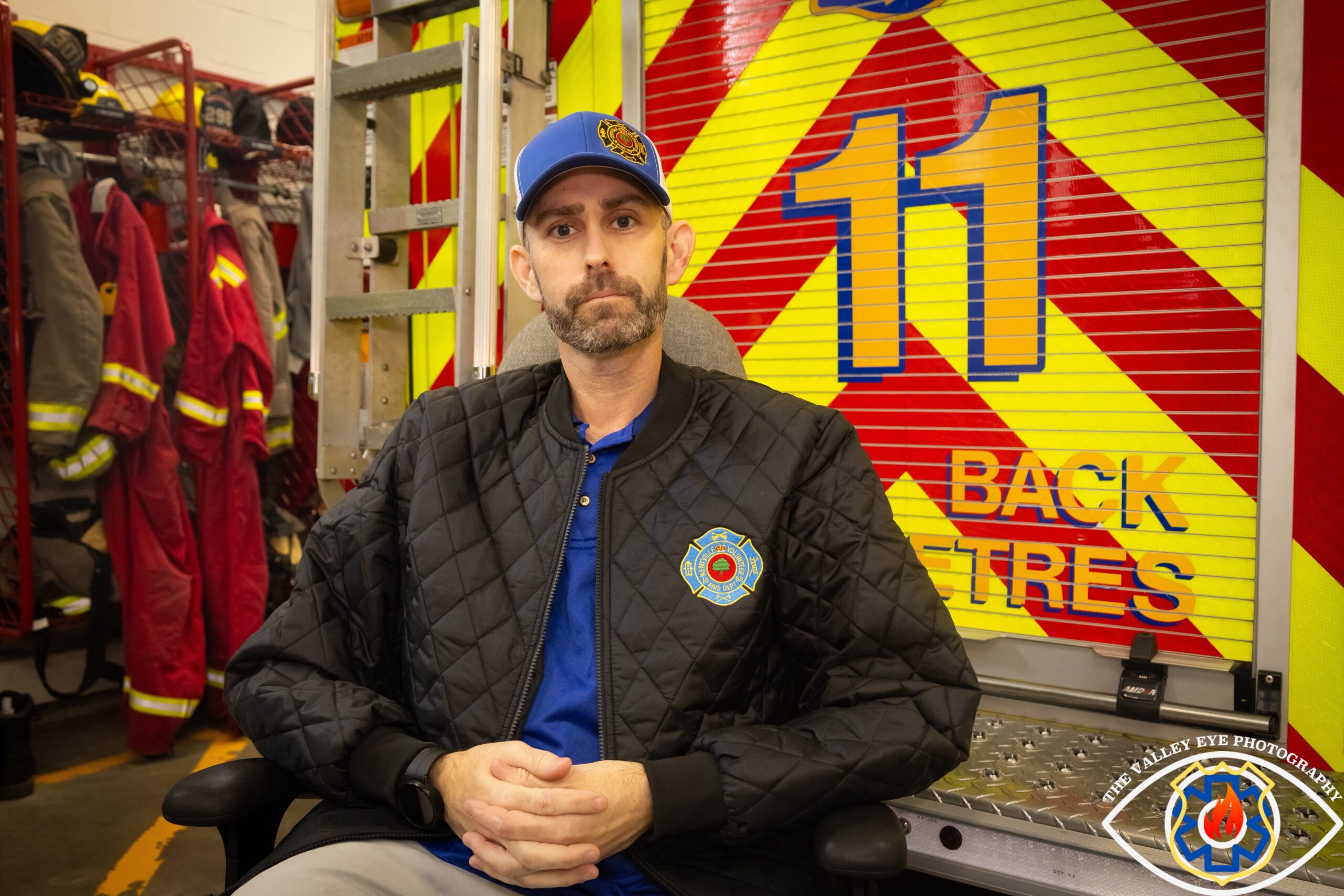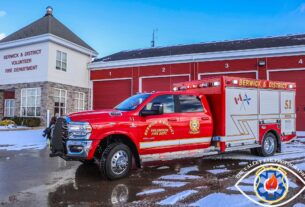Being a firefighter is something many of us dreamed about doing when we grew up. The dream of jumping in a fire truck with the lights and sirens, rushing to fight a fire, ended up becoming a reality. Little did we know the long term impacts it can have on our bodies.
Joel Neily, originally from Falmouth, joined the fire service in 2010 as a volunteer firefighter, accumulating his time between two fire departments while taking a few years off in between to better focus on raising his young family. The majority of his 11 years in the fire service has been frontline interior firefighting.
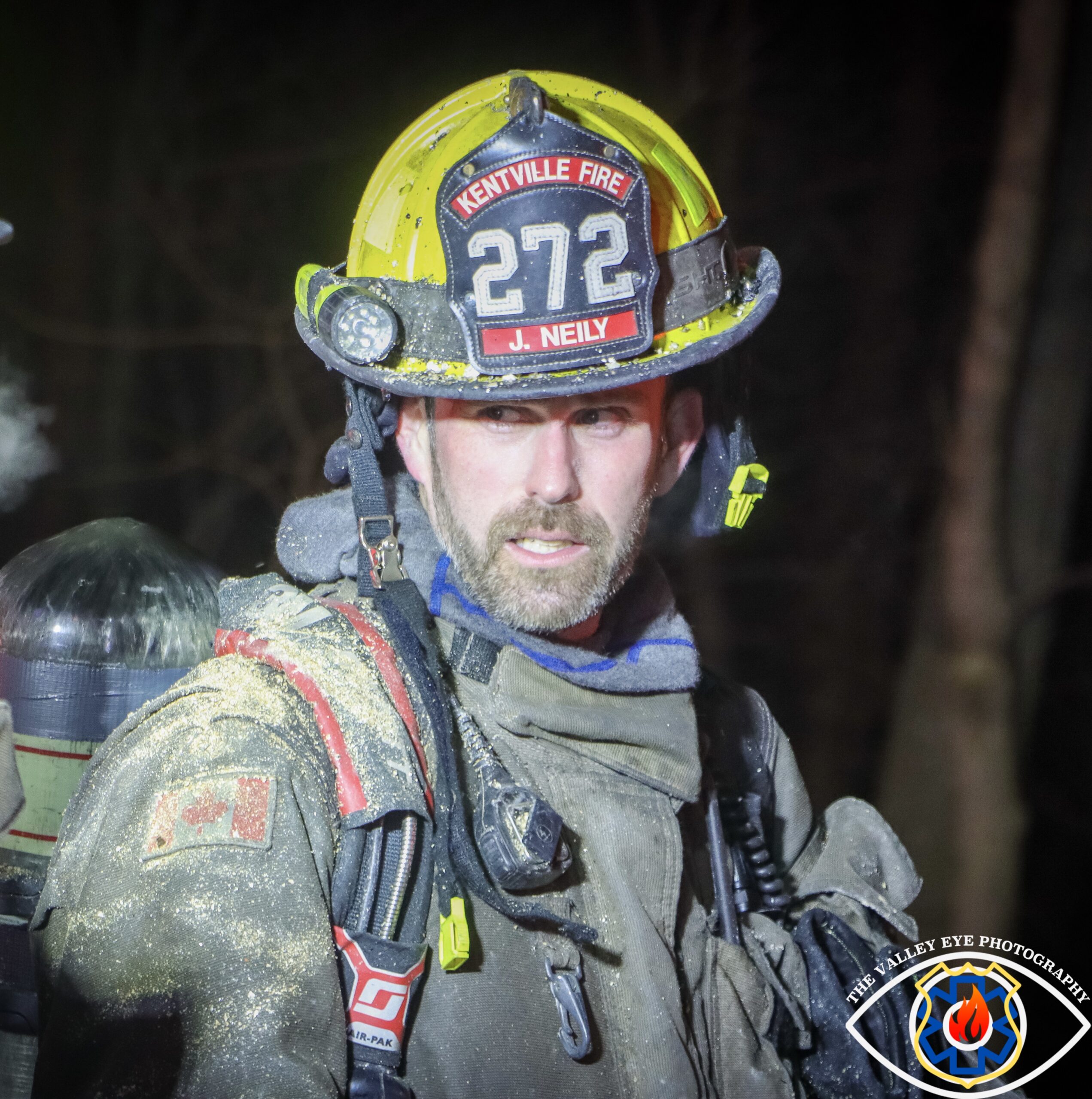
Neily, currently a member in Kentville Volunteer Fire Department, is now off work and on leave from the department after being diagnosed with a presumed form of firefighting cancer.
While battling fires, firefighters are constantly working with toxic carcinogens. With the increase in synthetic materials in homes, there is a much greater risk of contracting firefighting forms of cancer while being exposed during an incident and even after.
Not only are firefighters exposed during structural fires, but also during car fires, chimney fires, debris fires, wildfires, and many other fire related incidents. Post fires are the most dangerous. After the fire has been extinguished, fires off-gassing creates toxic chemicals creating even higher risks.
In Canada, firefighters have a 14% higher risk of death from cancer and a 9% higher risk of being diagnosed due to exposure.
“Years ago when I first started firefighting, I was told to watch your lymph nodes. Probably about two years ago, I noticed that the left upper lymph nodes were swollen when I was shaving,” Joel shared.
After weeks went by and his left lymph nodes were still swollen, Neily recounted it being weird. The signs Joel was told to watch out for were happening. Taking no chances, he reached out to his doctor prior to presumptive testing for firefighters, with results taking over a year and a half to come back.
Before Joel received his results, he was struggling physically. While still attending fire calls as an operator, the cancer was taking its toll.
Joel was diagnosed with Stage 4 Diffuse Large B-Cell Lymphoma (DLBCL) which is an aggressive, advanced form of non-Hodgkin’s lymphoma, where the cancer has spread beyond the lymph nodes to at least one organ outside the lymphatic system.
“During that time it became really aggressive in my body. I ended up with a large tumour in my leg which took away my mobility. I’ve been on crutches now for about six weeks, but hopefully the chemo will knock that down and I can start walking again,” stated Neily.
While Joel is dealing with his firefighting form of cancer, he isn’t alone and steps to better protect our firefighters have improved significantly over the years.
DLBCL is one of the 19 assumed cancers which is now covered through WCB. This means if you’ve been a firefighter for a certain amount of time and you get this type of cancer it’s assumed it’s come from firefighting and is covered.
“Billy Marr was the catalyst for them now bringing in the presumptive based testing. Which basically means if I would have noticed that lump, I would immediately be able to get checked as a firefighter,” Neily stated.
William “Billy” Marr was a Captain with the Halifax Regional Fire & Emergency. He died from occupational cancer in April of 2024 at the age of 46, leaving behind two young sons.
After Marr discovered he had cancer during a routine colonoscopy in 2020, he spoke out about the need for expanding the list of cancers that were presumed to be related to firefighting. At the time, only six types of cancer were recognized under WCB.
Since his passing, the number of cancers related to firefighting has expanded to 19, which was announced in March of 2022, paving the way for coverage for firefighters.
In Nova Scotia there are approximately 600 paid firefighters and more than 6,000 volunteer firefighters who work to protect our communities.
While testing and coverage has been brought into play, the prevention begins on the fire grounds.
“Carcinogens are one of the main causes of cancer with firefighting. We need to be aware of these risks and take appropriate actions to limit them. This is why decontaminating, gear washing, and showering after these events is so important,” stated Safety Officer, Sean Morrison with the Kentville Fire Department.
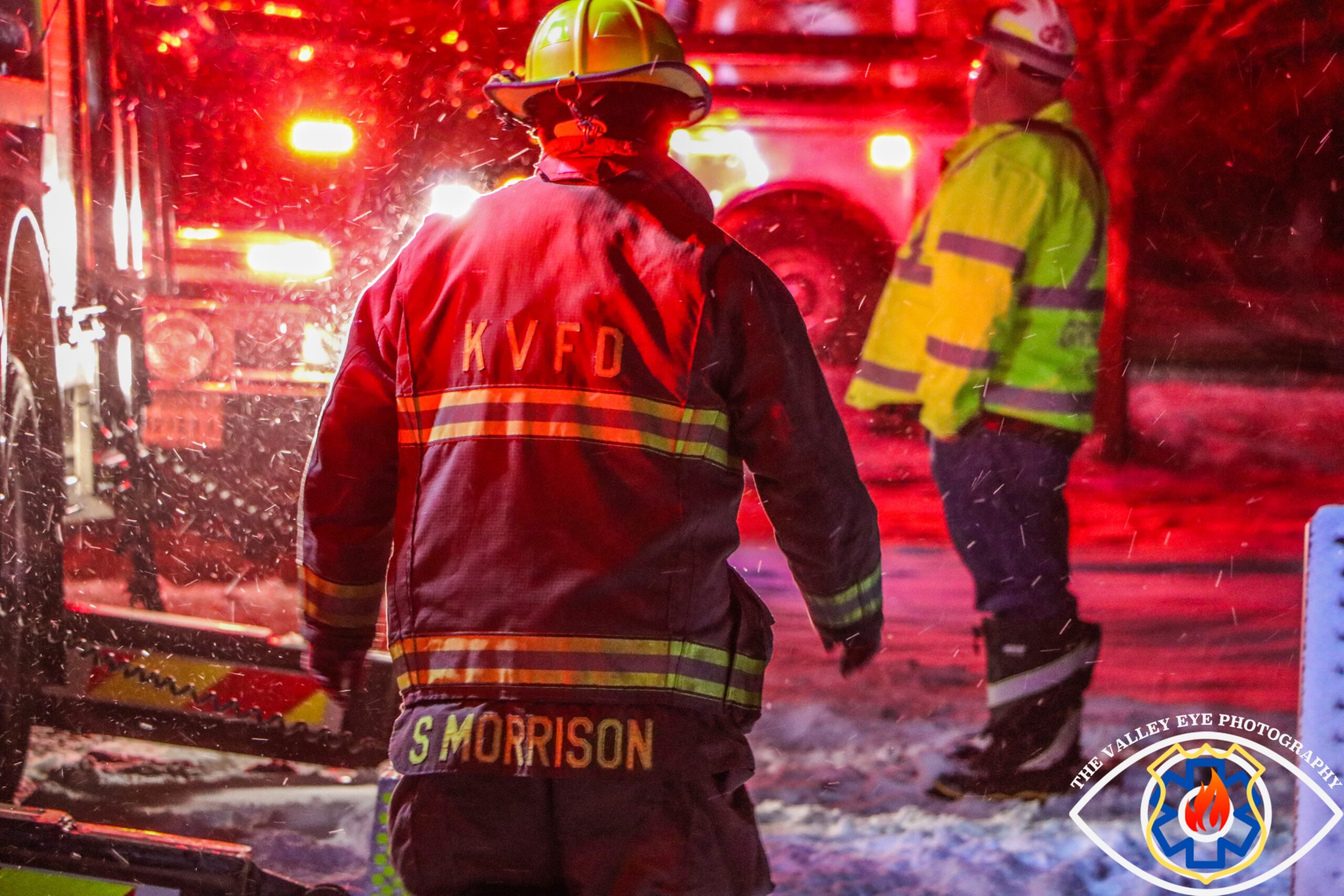
Morrison, with an accumulated 23 years in the fire service and 5 of those being as safety officer, is the chair the safety officer committee for the Kings County Firefighters Association. The Kentville Fire Department is one of the busiest fire stations in the valley running on average 475 fire calls a year. With more than 10% of those fire calls being related to fire, Kentville knows the importance of decontaminating their equipment.
Fire carcinogens are substances released when something is burning that can cause cancer. They are often found in smoke and soot which can be inhaled or absorbed through the skin. Carcinogens lurk everywhere after a fire, from the gear, to your hands, your neck, the food you touch, it’s endless and it’s a serious problem trying to get prevention in the heads of our frontline firefighters.
“Social media is massive lately. Every fire, we see different photos and videos from media and people in the public. For me personally now, I’m seeing a lot of more firefighters lacking of PPE,” commented Neily.
Protective Personal Equipment (PPE) has come along way over the years. PPE used during fires includes, turnout gear, breathing apparatus, flash hoods, and gloves. These tools are designed to protect us from fire, but also to protect us from the dangers of toxic carcinogens.
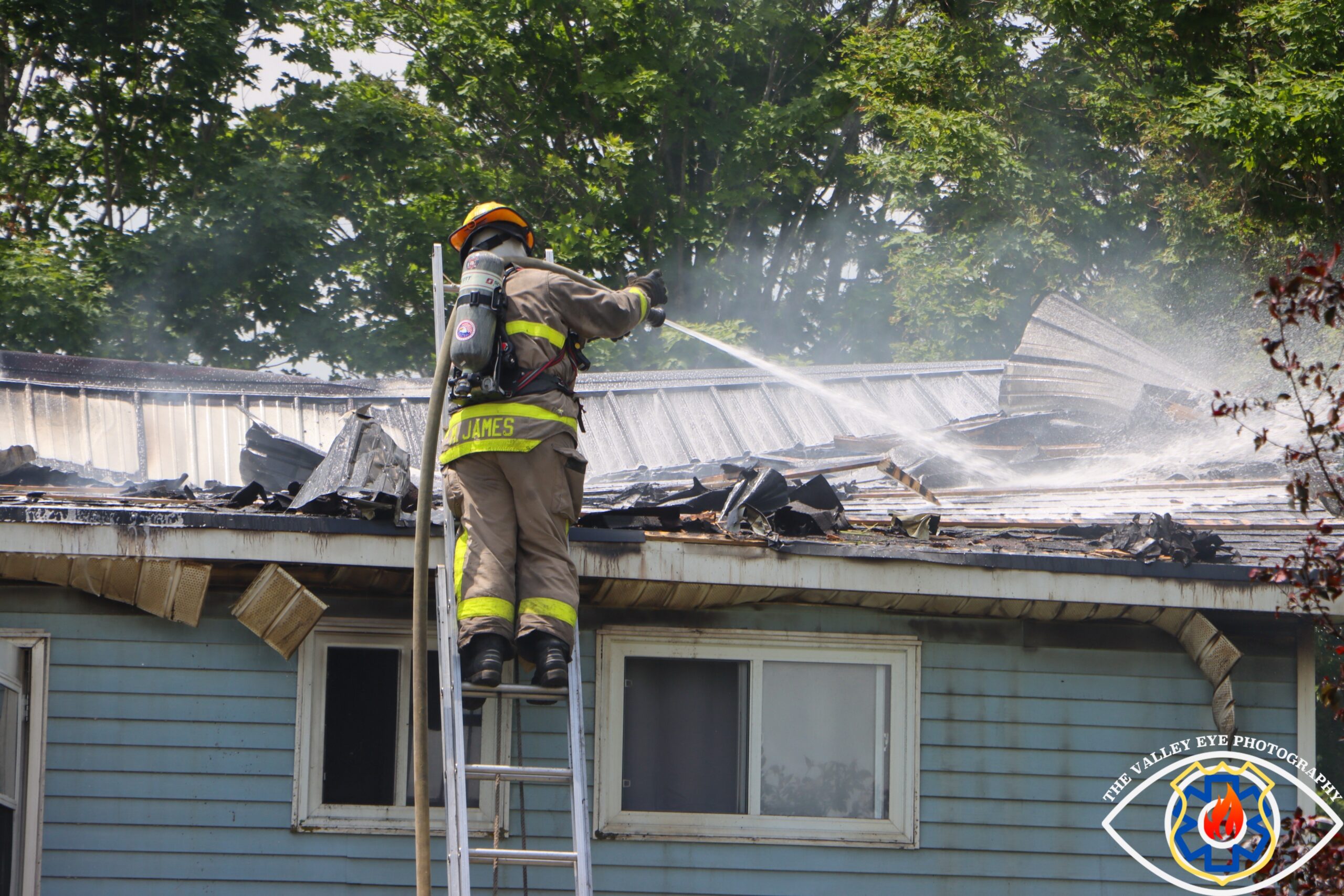
Over 50 years ago, firefighters weren’t equipped with the gear that’s available now.
“When I came, I received the gear of course, from a guy that had just passed. It was a long coat with the rubber liner inside and high rubber boots. We wore that gear summer and winter with wool socks in the winter, nothing to protect us,” Wayne Richie shared.
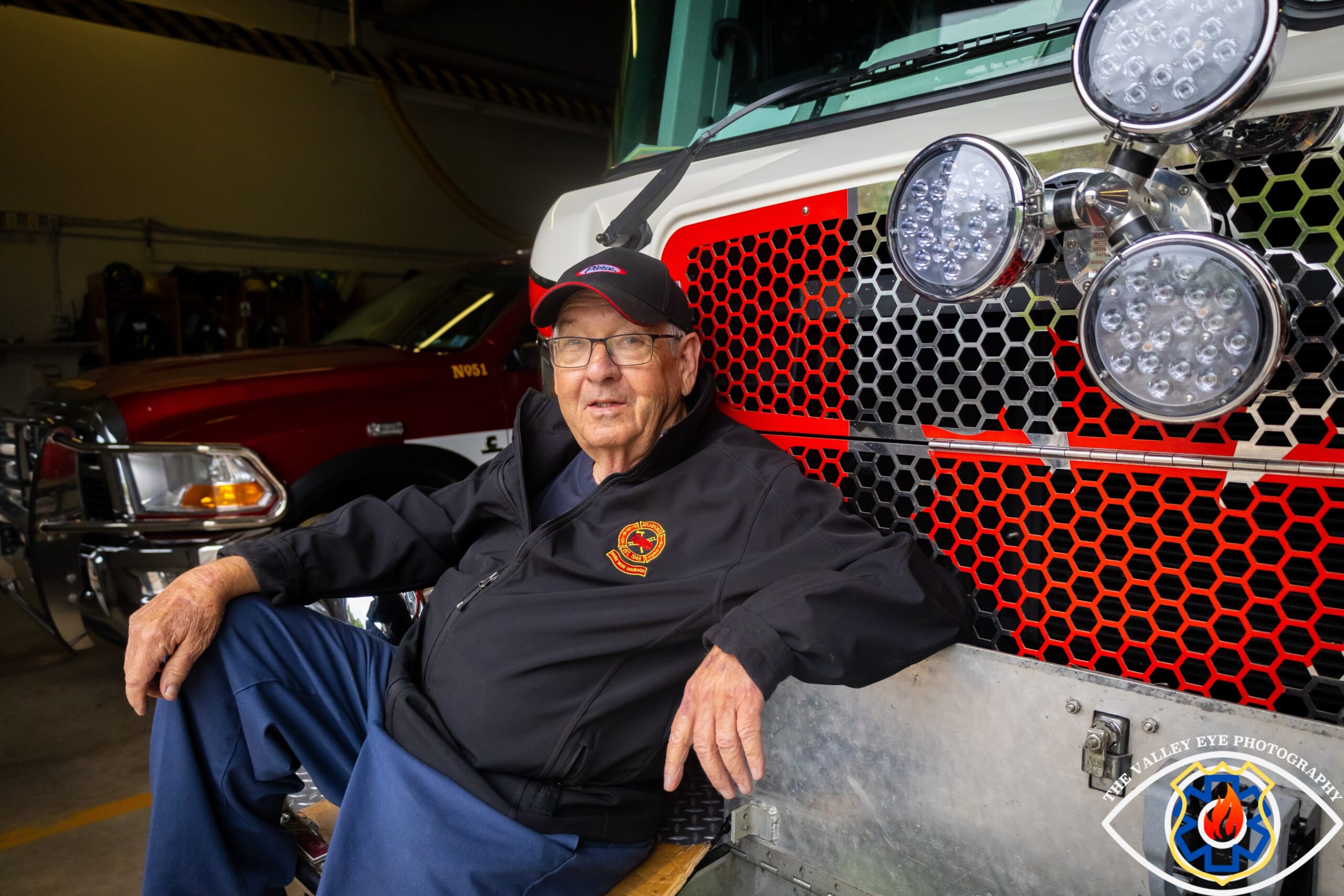
Richie joined the Aylesford Fire Department in the early 70’s where only two air packs for firefighters and limited protection available. He recalls his first house fire he went into, where one of the breathing packs didn’t work.
“I went in with a hose and a flashlight and they tied a rope to the back of my jacket so they could pull me out if I ran into trouble. But back then, we didn’t have flash hoods to protect us and we didn’t pay any attention to the different chemicals we walked into whatsoever,” Richie recalled.
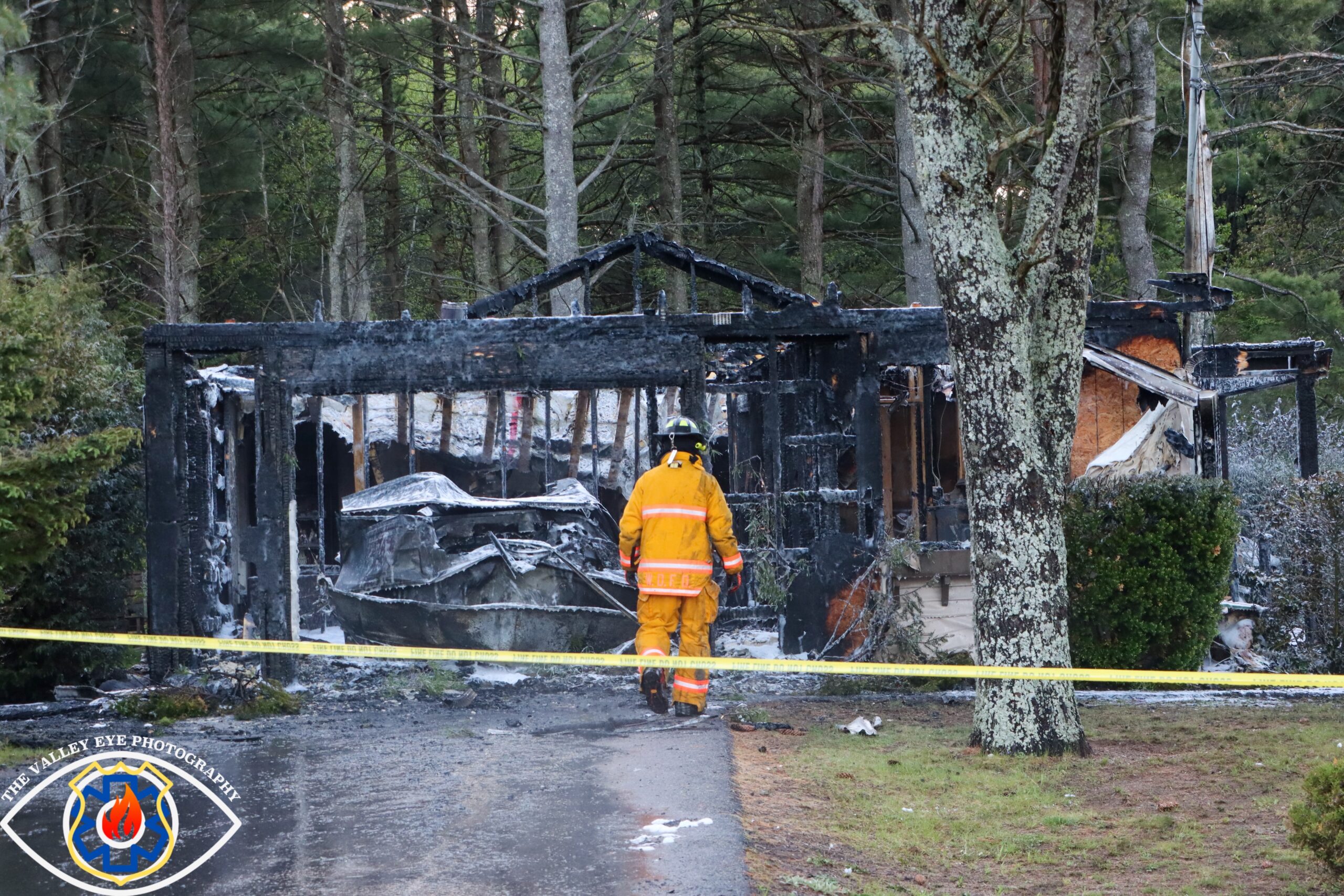
Wayne has been a member of the Aylesford Fire Department for 54 years this year.
Overtime, changes have been paramount to firefighters safety. Back in the day he remembers going to car fires where “you just choked a bit and got out of the smoke.”
The increase in protective equipment is something Richie has always welcomed, even being a member back when things might have been considered much easier.
“You see firefighters that don’t have the turnout gear on, you see them getting into smoke they shouldn’t and that’s all control. We have to keep at that. Safety has to be your number one priority and there’s still work to be done,” firefighter Wayne Richie expressed.
Most, if not all stations across the province have measures in place to protect firefighters from carcinogens. The key part of prevention comes from those who fight the fires, ensuring they wear the proper PPE and take the appropriate actions to prevent further exposure after a fire is over.
“We know that the carcinogens hang around in your gear, so we definitely want to make sure we get it washed. It’s not just the turnout gear, it’s the helmets, flash hoods, gloves, it’s anything that touches you,” stated Angeladayle Griffin, Safety Officer with the Wolfville Fire Department.
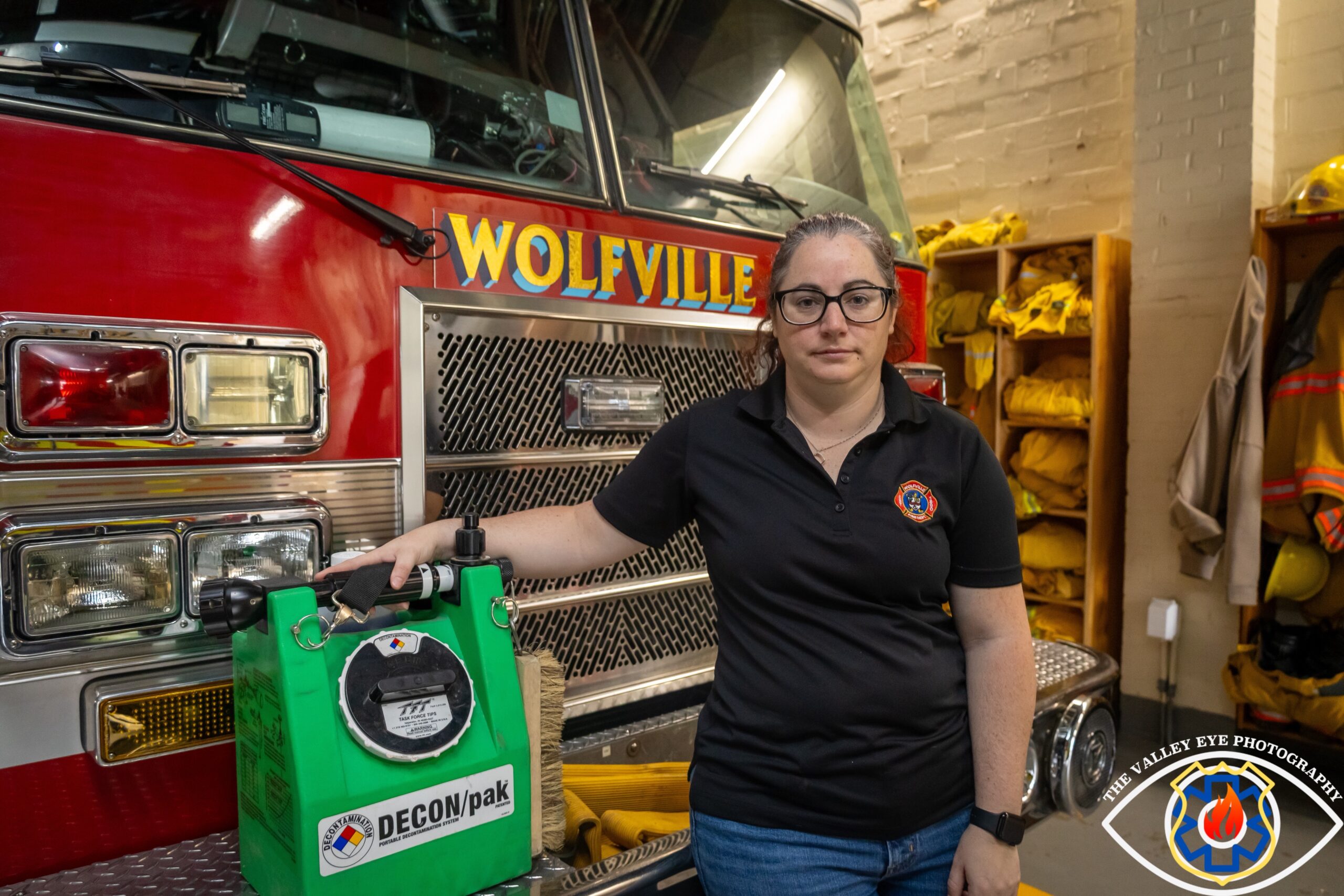
Griffin shared the steps Wolfville Fire in particular has in place including a washer on site, showers on site, on board decontamination equipment, and deep cleaning measures that firefighters take post fires.
They also ensure their trucks, like many other departments, are always clean after a fire, including their station. This is not only for firefighters, but also for children and the general public who may be inside the trucks that potentially could be exposed to the carcinogens if not cleaned properly.
When asked about firefighters using PPE Griffin replied by stating, “Your health depends on it. Most of us now are running 45 minute bottles of air and we should be using it even during overhaul. We have the equipment and we have the knowledge – why aren’t we protecting ourselves?”
Once the fire is over, firefighters perform what’s called an “overhaul,” checking for hot spots and extension. Many end up removing their breathing apparatus, thinking the danger is over, but in all reality, they are still exposed to these harmful substances that are present even when the smoke and flames have dissipated.
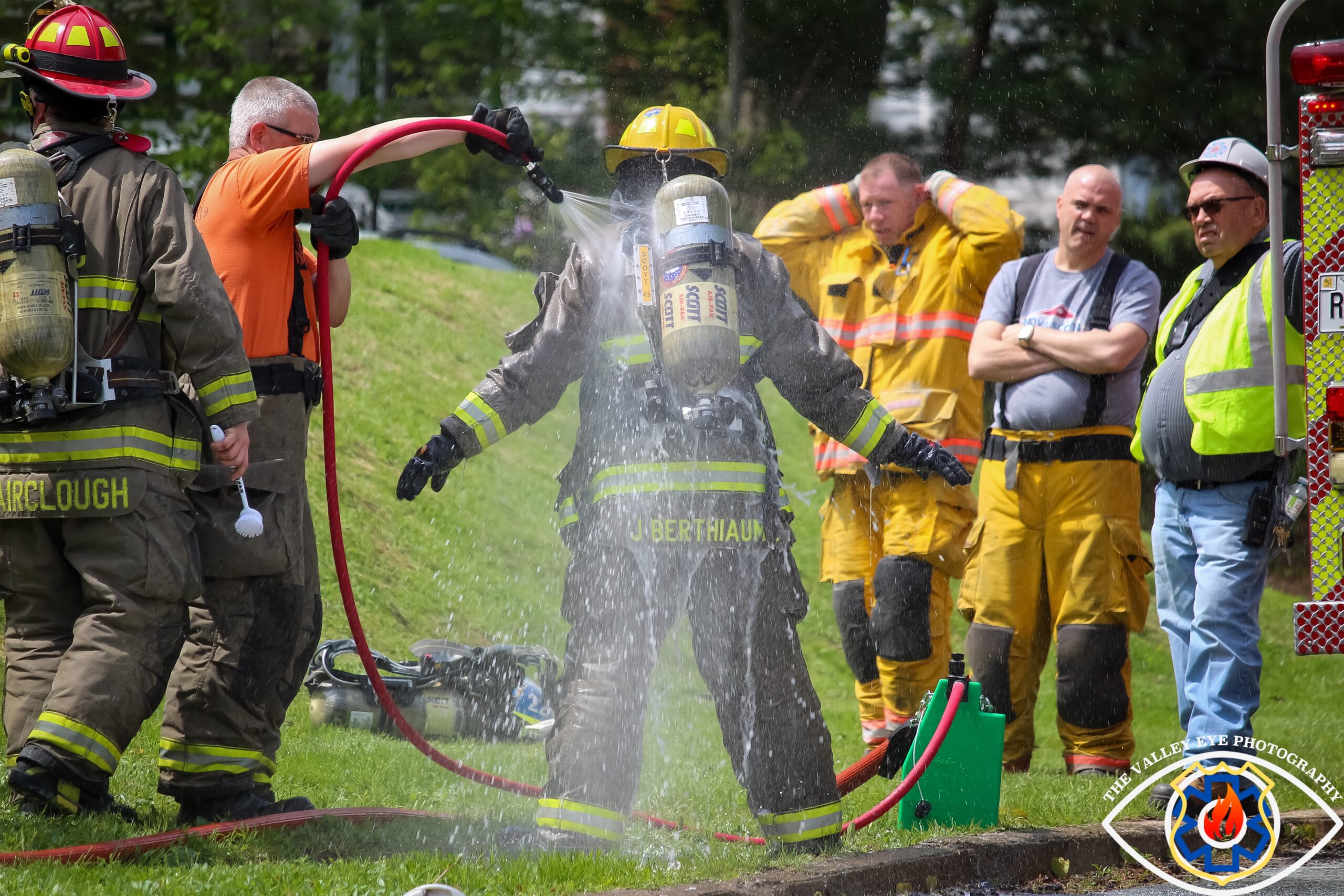
While fire departments have truly come a long way with equipment and prevention compared to years prior, the responsibility of taking care of your health and safety rests on each firefighter.
“When I was a new firefighter, I would get annoyed if I’d get smudge mark coming off my helmet. Back then I wanted my helmet to be so black so that everyone knew I was in a lot of fires. I can remember we use to make fun of people who had shiny helmets because that was the mentality back then, when in reality, that person was probably safer than the rest of us,” Joel Neily stated.
Money is also a struggle with the volunteer fire service. Equipment isn’t cheap for firefighting, with washers and dryers ranging in the tens of thousands of dollars to purchase.
Many fire departments are also now equipping interior firefighters with a second set of gear in the event of another fire so dirty gear can be cleaned. The expense of one set of bunker gear can be almost $10,000 each. With safety being a priority, some fire departments just don’t have the funds to protect their members.
To paint the picture, firefighters jump on a fire truck in their turnout gear and respond to a fire, which is just the beginning.
When they get on scene, firefighters put on their BA pack over their gear, dawn their flash hoods, and start breathing oxygen from their tanks before they enter a burning structure.
When they exit, the mask comes off which has been exposed to carcinogens. The gear they’re wearing, also exposed to toxic materials – gloves, flash hoods, and the rest of their equipment.
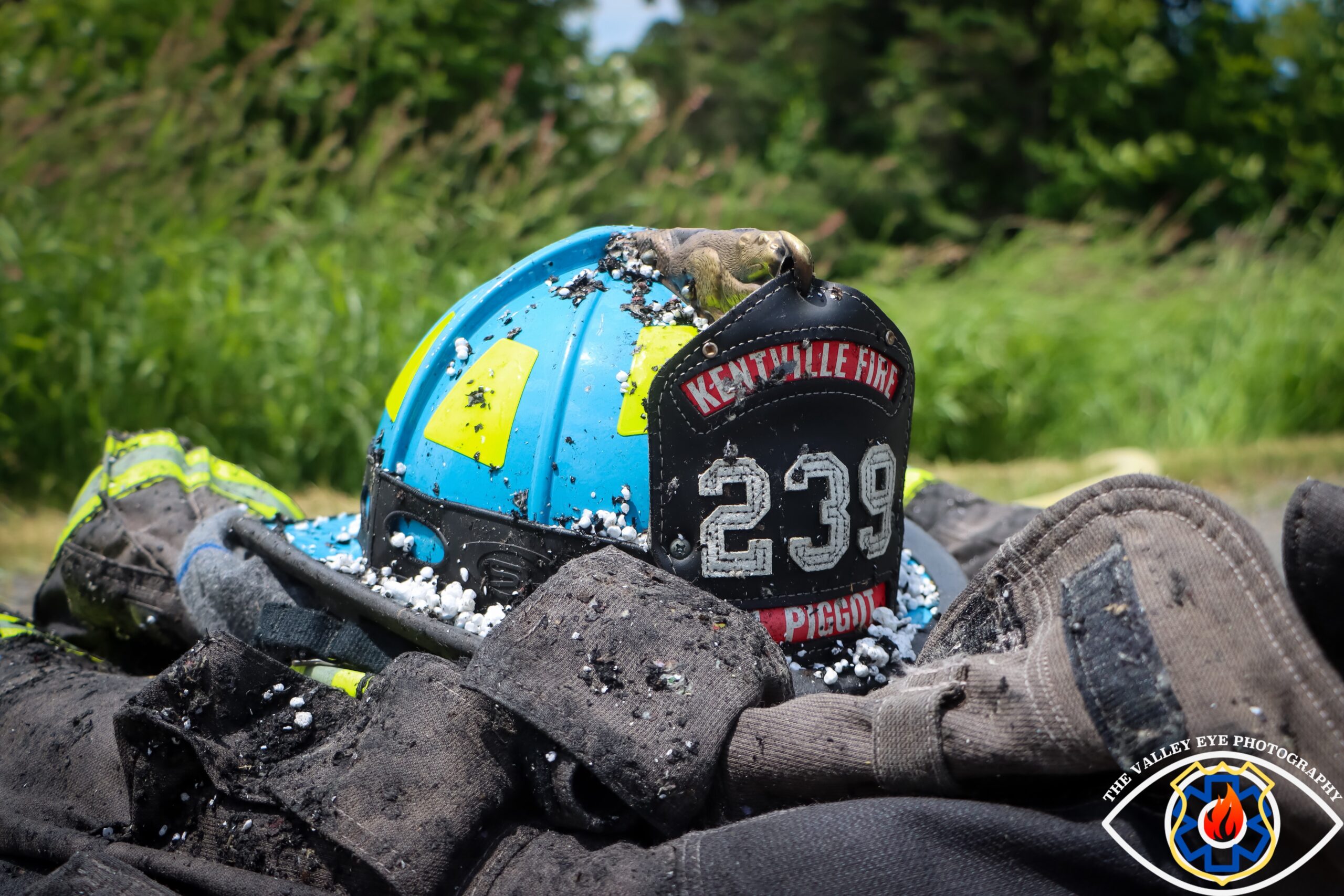
Prevention starts right away by using wet wipes while on scene to wipe sensitive areas of your skin. Even touching your phone, shaking hands, or eating food can increase exposure. Cleaning your hands before consuming food on a fire scene is crucial. It’s a never ending cycle of preventing yourself and others from being exposed.
When the fire is over, all that gear needs to be bagged to prevent spreading of carcinogens onto the trucks, cleaning the gear, spraying it down, and properly washing and drying, which also includes the trucks. The process after a fire can take hours to ensure any equipment is free from toxic substances.
This job, which career and paid firefighters sign up to do, is ultimately lethal to their bodies and many are unaware of the consequences.
“I just really want people to understand that when you come back from these calls, decon is incredibly important,” Neily stressed.
Research has shown that bunker gear and other equipment does off-gas following fires. Off-gassing refers to the release of chemicals from materials that have been exposed to fire or smoke.
If gear is not properly cleaned after a fire, it can put toxic carcinogens in the air, exposing not just firefighters, but anyone who may come in close contact with equipment that has been contaminated. Prevention is key.
When asking Neily if he thinks differently about volunteering his time, he shared that it has changed his mindset a bit.
“I’m putting this on my family because it’s something I did – it’s a tough pill to swallow. I believe I’ll be back but it’s hard to say where I’ll be in the next couple of years.”
The support Joel has received has been noted within the fire service. When he attended his first chemo treatment, members from the Kentville Fire Department stood outside Valley Regional, supporting him through this battle.
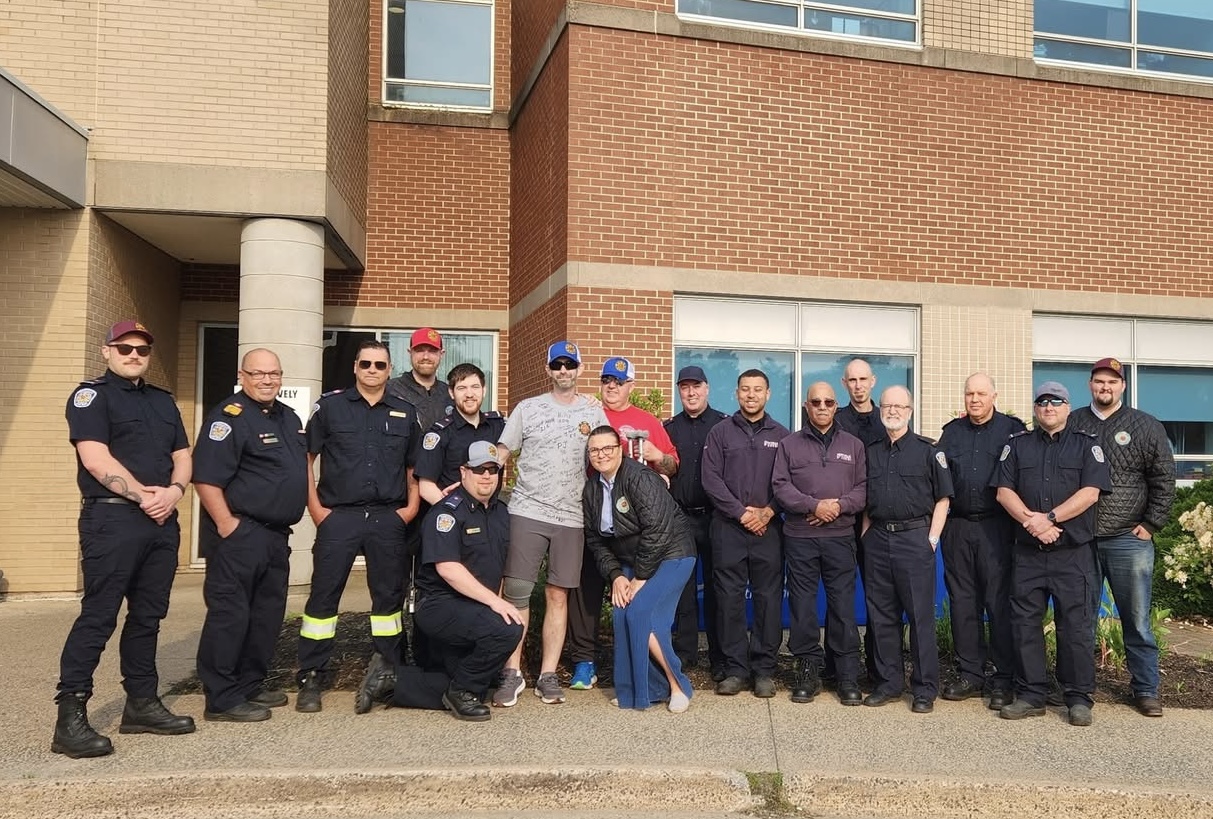
Neily receives messages on a daily basis from firefighters in various areas in Nova Scotia who have heard his story. They have spoken up to their chiefs in their departments about his story and used funds to purchase equipment such as washers to help better protect their firefighters.
Joel isn’t alone. Fellow firefighter and long-time friend, Jeremy Walsh, who is also a member in Kentville Fire Department, lost his father Richard in 2010, following a ten year battle with firefighting related cancer. Richard was a member in the Kentville Fire Department and Hantsport Fire Department for a total of 29 years before his passing.
Jeremy has seen positive improvements in the fire service since following his father’s legacy.
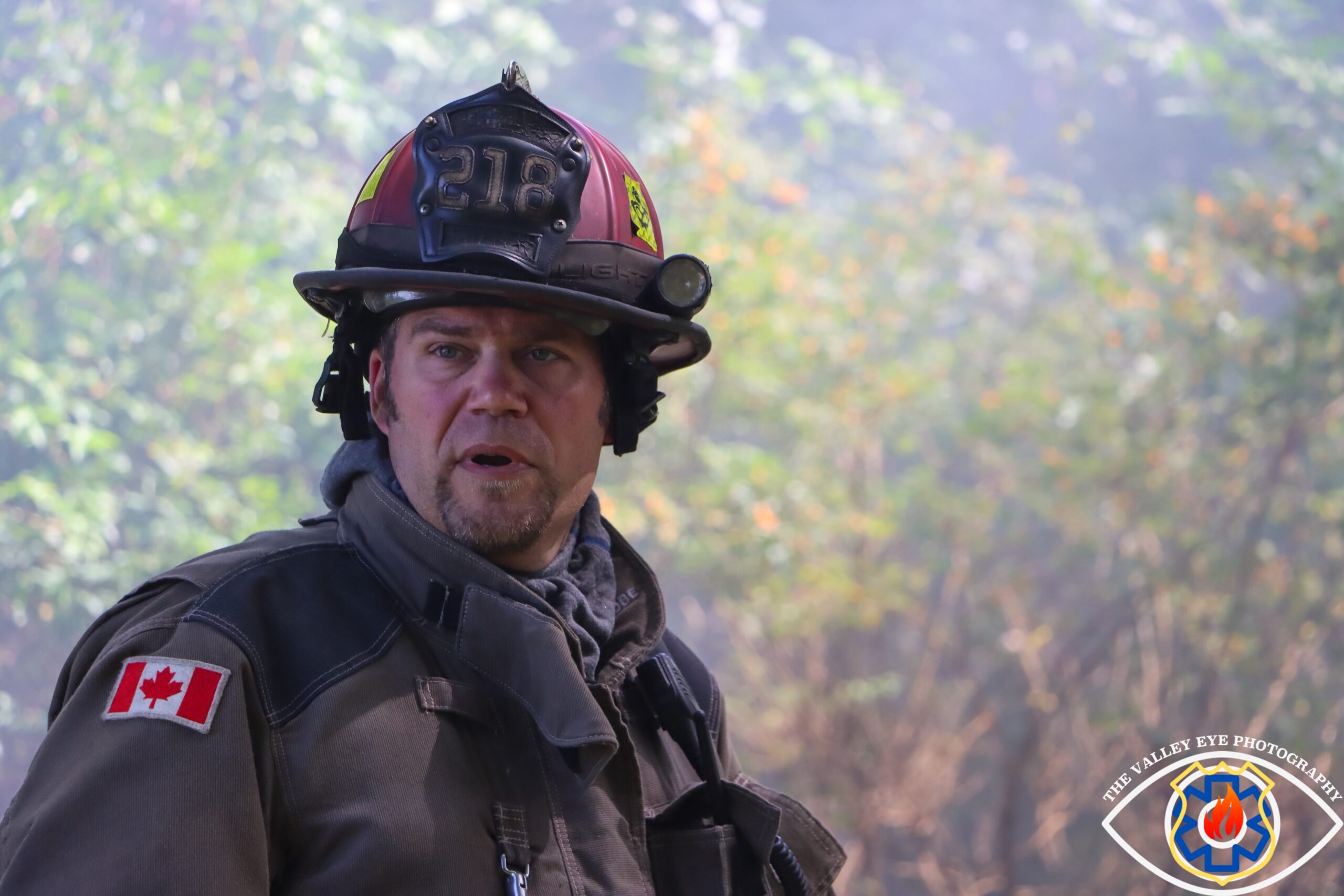
“To see how far we’ve come since then and to see people suffering from the effects of poor decon or the old days of the wearing the badge of honour with the dirty gear, seeing that go out the window and going towards a clean society in the fire service, it makes me happy to see that. I think that’s were a lot of Joel’s support comes from is people like me that have been through the loss of a family member because of the same reason,” Captain Jeremy Walsh with the Kentville Fire Department shared.
Education is crucial to the safety of our firefighters. Despite what Joel is facing, he’s focused on helping provide others with positivity, even though he’s struggling.
There are many who have experienced the effects of cancers related to firefighting and caught the signs quickly, but PPE is vital to firefighters safety, ensuring each member has access to protect themselves.
“Yeah, PPE can be boring but we can do better.”
We are wishing Joel all the best in his continued battle against cancer as he makes the trip to the city this week for more chemo treatment.
Not everyone has the courage to be as positive as Joel. This illness not only takes a lot out of you physically, but also mentally. Joel’s positive spirt and support from fellow firefighters is truly inspiring and we genuinely wish him all the best.
Adrian J.

